Lightweight Concrete Innovations: High-Strength, Low-Density Solutions for Critical Infrastructure
"Advancements in Lightweight Concrete: Reducing Density Without Compromising Strength and Durability for Critical Applications" |
The development of lightweight aggregates and additives to produce high-strength and durable concrete with reduced density has been a crucial area of research, especially for applications where weight reduction is critical, such as in high-rise buildings and transportation infrastructure.
Lightweight Aggregates: Lightweight aggregates are materials that are used to replace traditional aggregates like gravel and sand in concrete mixtures. These aggregates include materials like expanded clay, shale, or slate, expanded perlite, expanded vermiculite, and lightweight aggregate concrete. These aggregates are lighter in weight compared to traditional aggregates, which helps in reducing the overall density of the concrete while maintaining adequate strength.
Additives: Various additives are used in concrete mixtures to enhance specific properties such as strength, durability, and workability. For lightweight concrete, additives like air-entraining agents, superplasticizers, and viscosity modifiers are commonly used. Air-entraining agents create tiny air bubbles in the concrete, which reduces its density without compromising strength. Superplasticizers improve the workability of the concrete mixture, allowing for better flow and compaction. Viscosity modifiers can improve the cohesion of lightweight concrete mixtures.
Foaming Agents: Foaming agents are another type of additive used to produce lightweight concrete. These agents are mixed into the concrete mixture to create a stable foam, which is then incorporated into the mixture to reduce its density. Foamed concrete can achieve significantly lower densities compared to traditional concrete while still maintaining reasonable strength and durability.
Fiber Reinforcement: Incorporating fibers such as glass, synthetic, or steel fibers into lightweight concrete can enhance its strength and toughness. These fibers act as reinforcement within the concrete matrix, improving its resistance to cracking and increasing its overall durability.
Nano and Micro Materials: Recent advancements in nanotechnology and micro-materials have also contributed to the development of lightweight concrete with high strength and durability. Nano-sized particles, such as nano-silica or nano-clay, can be added to the concrete mixture to enhance its mechanical properties and reduce its overall density.
Testing and Quality Control: Quality control measures and testing protocols are essential for ensuring the performance and durability of lightweight concrete mixtures. Various standardized tests, such as compressive strength tests, flexural strength tests, and durability tests, are conducted to evaluate the properties of lightweight concrete and ensure that it meets the required specifications for specific applications.
In summary, the development and application of lightweight aggregates, additives, and advanced materials have enabled the production of high-strength and durable lightweight concrete suitable for a wide range of applications, including high-rise buildings and transportation infrastructure, where weight reduction is critical. Continuous research and innovation in this field are essential for further improving the performance and sustainability of lightweight concrete solutions.
#LightweightConcrete #HighStrength #lowdensity #infrastructure #construction #innovation #buildingmaterials #sustainability #engineering #advancedmaterials #concretetechnology #highrise #transportation #durability #strength #efficiency #greenbuilding #structuralengineering #innovativematerials #infrastructuredevelopment
-
 10:15
10:15
TinyGiantLife
1 year agoHow to Make and Build AirCrete Tiny Houses
110 -
 2:09:52
2:09:52
The Craftsmen's Collective
1 year agoSkip The Seams, Make That Concrete Huge - Chuck Fournier | Creative Concrete Industries
71 -
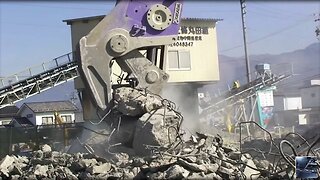 10:13
10:13
Amazing Technology
11 days agoMonster crushing reinforced concrete - Technology Solutions
-
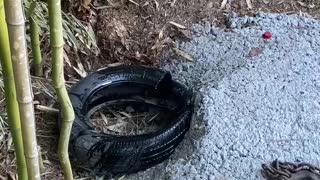 2:10
2:10
Mattsofli
1 year agoConcrete
9 -
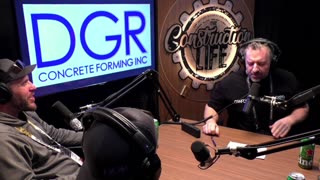 35:20
35:20
TheConstructionLife
3 months ago#529 CCE Live to YouTube Concrete Foundations with Innovative Techniques with Ryan & Scott from DGR
13 -
 0:14
0:14
CustomConcreteDesign
9 months agoCONCRETE COATING w Epoxy #shorts ✨️
63 -
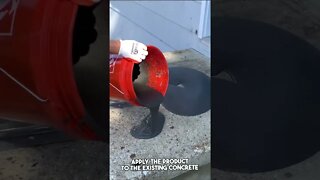 0:58
0:58
Andrew Thron Improvements
1 year agoHow to make Old Concrete look Brand New! (DIY Concrete Resurfacing)
86 -
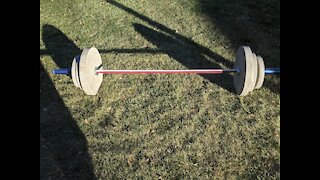 11:37
11:37
Mavericks Workshop
2 years agoHow to Make your own DIY Weight Plates with concrete
35 -
 12:19
12:19
AirCrete Projects and Tools
1 year agoWhat Is Aircrete?
111 -
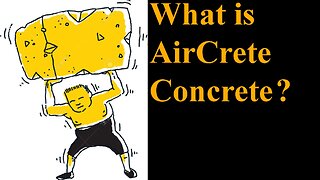 0:43
0:43
TinyGiantLife
1 year agoWhat is AirCrete Concrete?
18